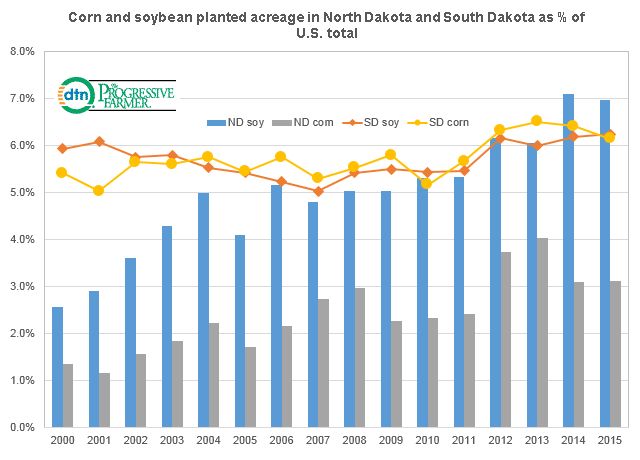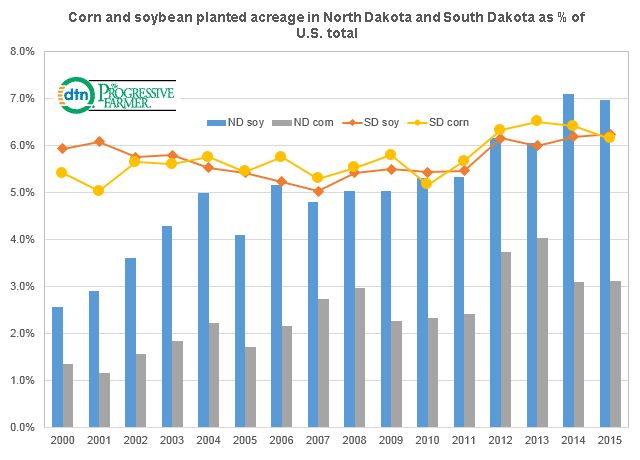Fundamentally Speaking
Dakota Row Crop Acreage as % of U.S.
It was about ten years ago that the grain and oilseed contracts seemingly moved to a new pricing paradigm with record values being seen for a number of crops, especially corn and soybeans.
The diversion of these commodities from food to renewable fuels purposes, the steady depreciation of the U.S. dollar and increased consumption of meat and dairy protein by citizens of the developing nation's requiring more feed grain and protein meal usage were some of the key factors for this price surge.
This in turn boosted planted area of these crops with corn seedings moving to levels not seen since the early 1940's and soy acreage attaining new record highs.
P[L1] D[0x0] M[300x250] OOP[F] ADUNIT[] T[]
In a number of posts over the past few years we noted that planted acreage of these crops really took off in the Dakotas, especially North Dakota.
Much of this had to do with greater net returns per acre planting corn and soybeans as opposed to some of the more traditional crops grown in this region of the country such as spring and durum wheat, sunflowers and rapeseed among others. The development of shorter season yet still high yielding seeds also accentuated this trend.
Now with projected 2016 crop prices down substantially from what has been seen in recent years talk is that both North and South Dakota may see their row crop seedings decline especially with farm finances in that part of the country under great pressure.
The accompanying graphic shows the North and South Dakota corn and soybean plantings as a percent of total U.S. acreage. For soybeans from 2000 to 2015 North Dakota soybean acreage increased from 2.6% of the U.S. total to 7.0% and corn from 1.4% to 3.1%.
The gains in South Dakota were much more moderate with soy increasing from 5.9% of the U.S total to 6.2% and corn increasing from 5.4% to 6.1%.
(KA)
© Copyright 2016 DTN/The Progressive Farmer. All rights reserved.






Comments
To comment, please Log In or Join our Community .